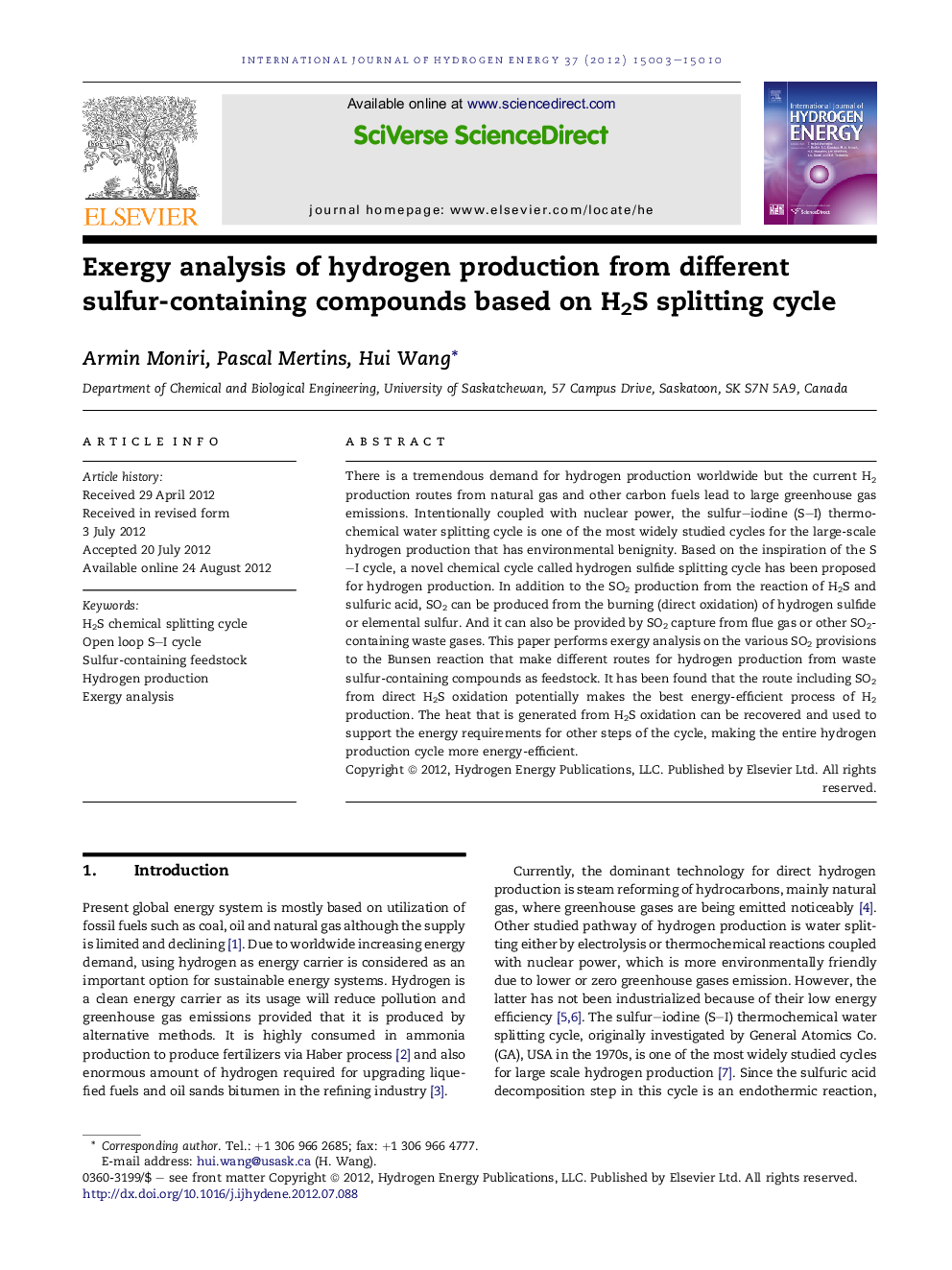| Article ID | Journal | Published Year | Pages | File Type |
|---|---|---|---|---|
| 1274507 | International Journal of Hydrogen Energy | 2012 | 8 Pages |
There is a tremendous demand for hydrogen production worldwide but the current H2 production routes from natural gas and other carbon fuels lead to large greenhouse gas emissions. Intentionally coupled with nuclear power, the sulfur–iodine (S–I) thermochemical water splitting cycle is one of the most widely studied cycles for the large-scale hydrogen production that has environmental benignity. Based on the inspiration of the S–I cycle, a novel chemical cycle called hydrogen sulfide splitting cycle has been proposed for hydrogen production. In addition to the SO2 production from the reaction of H2S and sulfuric acid, SO2 can be produced from the burning (direct oxidation) of hydrogen sulfide or elemental sulfur. And it can also be provided by SO2 capture from flue gas or other SO2-containing waste gases. This paper performs exergy analysis on the various SO2 provisions to the Bunsen reaction that make different routes for hydrogen production from waste sulfur-containing compounds as feedstock. It has been found that the route including SO2 from direct H2S oxidation potentially makes the best energy-efficient process of H2 production. The heat that is generated from H2S oxidation can be recovered and used to support the energy requirements for other steps of the cycle, making the entire hydrogen production cycle more energy-efficient.
► Several open S−I cycles were developed based on the H2S chemical splitting cycle. ► These cycles enable conversion of sulfur compounds from waste streams into hydrogen. ► Exergy analysis was conducted for these routes of hydrogen production. ► SO2 produced from burning H2S would make the most energy-efficient H2 production route.
